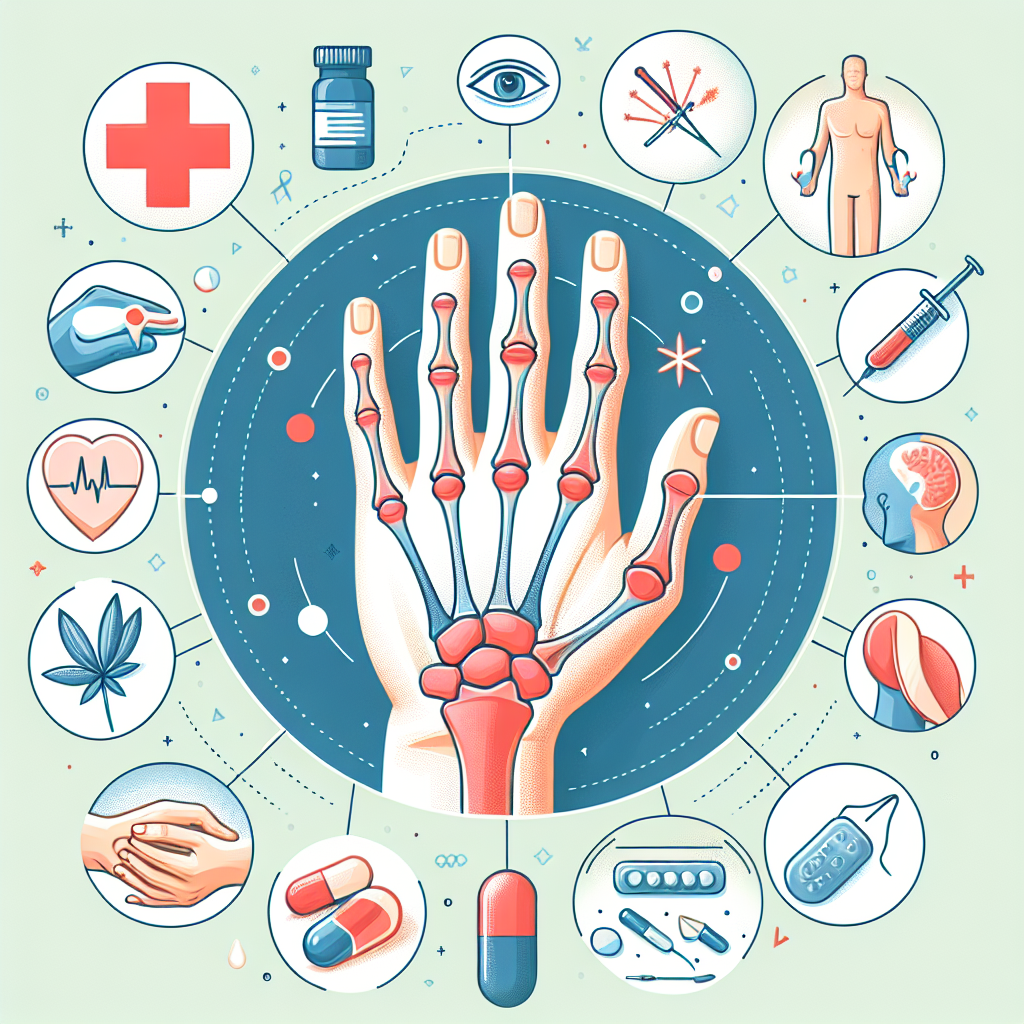Arthritis is a common condition that affects millions of people worldwide. It is characterized by inflammation and stiffness in the joints, leading to pain and limited movement. While there is no cure for arthritis, there are various treatments available to help manage symptoms and improve quality of life. In this article, we will explore the common treatments for arthritis, including medication, therapy, and lifestyle changes.
Medication
One of the most common treatments for arthritis is medication. There are several types of medications that may be prescribed to help manage symptoms and reduce inflammation in the joints. These include:
1. Nonsteroidal anti-inflammatory drugs (NSAIDs): NSAIDs such as ibuprofen and naproxen are commonly used to reduce pain and inflammation in arthritis. They work by inhibiting the production of prostaglandins, which are chemicals that cause inflammation in the body.
2. Corticosteroids: Corticosteroids are powerful anti-inflammatory medications that can be injected directly into the affected joint to reduce pain and swelling. They can also be taken orally or applied topically in cream or gel form.
3. Disease-modifying antirheumatic drugs (DMARDs): DMARDs are a type of medication that can slow down the progression of certain types of inflammatory arthritis, such as rheumatoid arthritis. They work by suppressing the immune system and reducing inflammation in the joints.
4. Biologic agents: Biologic agents are a newer class of medications that target specific proteins in the body that contribute to inflammation. They are often used in combination with other medications to treat moderate to severe arthritis.
Therapy
In addition to medication, therapy can also be a valuable treatment option for arthritis. Physical therapy can help improve flexibility, strength, and range of motion in the affected joints. A physical therapist can develop an individualized exercise program tailored to the patient’s specific needs and abilities. Occupational therapy can also be helpful in teaching patients how to perform daily tasks more easily and efficiently.
Another type of therapy that may be beneficial for arthritis is hydrotherapy, or water therapy. Exercising in a warm pool can help reduce pain and stiffness in the joints while improving muscle strength and flexibility. Some people find relief from arthritis symptoms by using hot or cold packs on the affected joints, or by trying techniques such as acupuncture or massage therapy.
Lifestyle changes
In addition to medication and therapy, making certain lifestyle changes can also help manage arthritis symptoms and improve quality of life. These include:
1. Maintain a healthy weight: Excess weight puts added strain on the joints, especially in the knees, hips, and spine. Losing weight can help reduce pain and inflammation in arthritis.
2. Exercise regularly: Regular physical activity can help improve joint flexibility, muscle strength, and overall fitness. Low-impact exercises such as swimming, walking, and biking are often recommended for people with arthritis.
3. Eat a balanced diet: Eating a healthy diet can help reduce inflammation in the body and promote overall wellness. Some studies suggest that certain foods, such as fatty fish, nuts, and fruits and vegetables, may have anti-inflammatory properties that can benefit arthritis.
4. Get plenty of rest: Getting enough rest and sleep is important for managing arthritis symptoms. It can help reduce pain and fatigue, and allow the body to heal and repair itself.
FAQs
Q: Is there a cure for arthritis?
A: There is currently no cure for arthritis, but there are several treatment options available to help manage symptoms and improve quality of life.
Q: How do I know which treatment is right for me?
A: The best treatment for arthritis will depend on the type and severity of the condition, as well as the individual’s overall health and lifestyle. It is important to work with a healthcare provider to develop a personalized treatment plan.
Q: Are there any alternative treatments for arthritis?
A: Some people find relief from arthritis symptoms by trying alternative treatments such as acupuncture, massage therapy, or dietary supplements. It is important to discuss any alternative treatments with a healthcare provider before trying them.
Q: Can arthritis be prevented?
A: While it is not always possible to prevent arthritis, there are certain risk factors that can increase the likelihood of developing the condition. These include age, genetics, and previous joint injuries. Maintaining a healthy lifestyle and managing any underlying health conditions can help reduce the risk of developing arthritis.
In conclusion, arthritis is a common condition that can cause pain, stiffness, and limited movement in the joints. While there is no cure for arthritis, there are several treatment options available to help manage symptoms and improve quality of life. These include medication, therapy, and lifestyle changes. By working with a healthcare provider to develop a personalized treatment plan, people with arthritis can find relief and continue to lead active and fulfilling lives.
